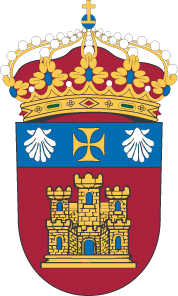Por favor, use este identificador para citar o enlazar este ítem: http://hdl.handle.net/10259/9696
Título
Estudio comparativo de certificación energética de edificio singular mediante Código Técnico de la Edificación y certificado Passivhaus
Autor
Fecha de lectura/defensa
2019-07-09
Resumo
Los edificios del sector residencial y terciario son responsables del 40% del consumo de energía primaria en la Unión Europea, así como de las emisiones de CO2 que lleva aparejadas. En este sentido, el estándar Passivhaus se está extendiendo como referente mundial de los edificios de consumo de energía casi nulo, desde su implantación en 1990. Aporta un sistema de construcción de edificios energéticamente eficientes, con elevado confort térmico y un bajo consumo. Además de tener limitaciones claras para las demandas, consumos, permeabilidad al aire o transmitancias térmicas, entre otros parámetros, una vez finalizado el edificio se realizan diferentes ensayos in situ para verificar que realmente se cumplen dichos requisitos. En este Trabajo de Fin de Grado se ha analizado el denominado Espacio Futura, construido junto a la fábrica VEKA Ibérica en Burgos y certificado como Passivhaus. Se trata de un edificio terciario de uso polivalente para la realización de conferencias, exposiciones, y otros eventos de VEKA Ibérica. En este TFG se ha realizado la valoración del cumplimiento del edificio con estándar Passivhaus: (i) excelente aislamiento térmico, (ii) ventanas y puertas de altas prestaciones, (iii) ausencia de puentes térmicos, (iv) baja permeabilidad al aire y (v) ventilación mecánica con recuperador de calor. Una vez conocidas las características del edificio, se han estudiado dos cuestiones más: (i) análisis del comportamiento energético del edificio con dos programas reconocidos por el Código Técnico de la Edificación, uno simplificado (CE3X) y otro general (SG SAVE, basado en el estándar Energy Plus), para comparar la evaluación energética del edificio diseñado con el estándar Passivhaus, (ii) análisis de algunas variables en detalle, más allá de las demandas, consumos energéticos y emisiones anuales, que describen mejor el comportamiento térmico del edificio. The buildings of the residential and tertiary sector are responsible for 40% of the primary energy consumption in the European Union, as well as the CO2 emissions that it entails. In this sense, the Passivhaus standard is being extended as a worldwide benchmark for nearly zero energy buildings, since its implementation in 1990. It provides a system of energy efficient buildings with a high thermal comfort and low consumption. Besides having clear limitations for demands, consumption, air permeability or thermal transmissions, among other parameters, once the building is finished, different on-site tests are carried out to verify that these requirements are actually met. In this Final Degree Project, the so-called “Espacio Futura” has been analyzed, it was built next to the VEKA Ibérica factory in Burgos and it was certified as Passivhaus. It is a tertiary building of polyvalent use for the realization of conferences, exhibitions, and other events of VEKA Ibérica. In this Final Degree Project, the assessment of building compliance with the Passivhaus standard was made by checking its bases: (i) excellent thermal insulation, (ii) high performance windows and doors, (iii) absence of thermal bridges, (iv) low air permeability and (v) mechanical ventilation with heat recovery. Once the characteristics of the building are known, two more questions have been studied: (i) analysis of the building's energy performance with two programs recognized by the “Código Técnico de la Edificación”, one simplified (CE3X) and the other general (SG SAVE, based on the Energy Plus standard), to compare the energy evaluation of the designed building with the Passivhaus standard, (ii) analysis of some variables in detail, beyond the demands, energy consumption and annual emissions, which better describe the thermal behavior of the building.
Materia
Edificios-Ahorro de energía
Buildings-Energy conservation
Aparece en las colecciones
Documento(s) sujeto(s) a una licencia Creative Commons Attribution-NonCommercial-NoDerivatives 4.0 Internacional











